|
The
Commercial Road Power Station
The foundation stone of the Municipal
Lighting Works was laid on Monday, 21st May, 1894 at a ceremony
performed by the mayor, Alderman C. T. Mander. Several of the
guests were involved in the project. They included Thomas
Parker, the town’s consulting electrical engineer, who designed
and supplied some of the equipment, F. H. Lewis, the town’s
electrical engineer, A. P. Brevitt the architect, and H.
Willcock the builder.
Afterwards they were entertained at a
luncheon at the Victoria Hotel during which speeches were given.
Mr. Thomas Parker said that “eleven and a half years ago he came
to Wolverhampton a solitary working man, with one boy, and
started not many yards from where the foundation stone had been
laid that day. Since then they had built, under his supervision,
works for the lighting of a great number of towns and for a vast
number of purposes, and now Wolverhampton was waking up to the
uses of electricity, and he had been able to perceive the
consummation of a long-entertained hope in the laying of a
foundation stone which meant the lighting of Wolverhampton by
electricity. With all the systems devised, and with all the
various efforts made by others throughout the world, they had
that day adopted the system of his own devolution. They had, he
felt convinced, acted wisely in adopting that system, and it
would be the one that would be taken up elsewhere.”
The power station, built at a
cost of £32,000, officially opened on Thursday 30th
January, 1895. The opening ceremony was performed by
the famous 19th
century physicist and electricity expert Lord Kelvin, President
of the Royal Society.
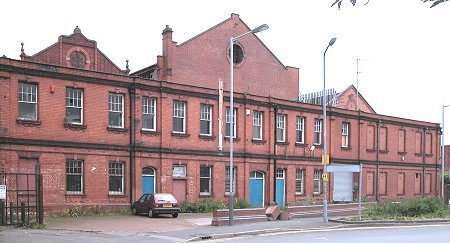
The power station in 2004.
The coal fired power station depended upon
the canal for its supply of coal. When it first opened it
supplied an area of roughly 5 square miles using rope driven,
direct current generators which were shut down at night, when the
town was supplied from a 9,000 ampere hour battery.
|
A
visit by members of the Institution of
Mechanical Engineers in 1897 to
Wolverhampton Power Station in
Commercial Road
The erection and
equipment of these works was completed
in January 1895, when they were formally
opened by Lord Kelvin; and since that
date the supply of electricity has been
continuously maintained. The present
capital expenditure has been £38,000,
with a capacity of 15,000 lamps of 8
candle power. The buildings at present
consist of a main generating station and
three sub stations.
The system of
supply is the high pressure continuous
current. The current is generated at
2,000 volts pressure, and is distributed
by high pressure mains to the outlying
sub stations, where it is transformed by
means of motor transformers down to
about 110 volts, at which pressure it is
distributed to low pressure mains, and
thereby to consumers' premises.
The plant at the
generating station consists of four
complete generating sets, each
comprising a horizontal compound
condensing engine and a separately
excited continuous current dynamo with a
rope driven exciter. Three of the four
sets are of 140 kilowatt capacity, and
the fourth is of 65 kilowatts; all four
are rope driven, and each can develop
2,200 volts. The dynamos are two pole
inverted. The condensing plant consists
of a Ledward ejector condenser, and a
centrifugal pump driven direct by a
vertical steam engine for raising the
condensing water from a canal.
The boiler house
contains three Lancashire boilers, two
economisers, pumps, etc. and steam is
generated at 130 lbs. per square inch.
The chimney is 100 feet in height, and
is of circular section throughout
inside. A water softening apparatus is
in use, having a maximum duty of 300
gallons per hour. The high pressure
mains consist of vulcanized bitumen
cables laid in iron troughs, which are
filled with bitumen and closed with a
watertight iron lid. The low pressure
mains are armoured single conductor
cables buried in the ground.
The sub station at
the Town Hall performs a quadruple duty:
it serves as a central switching
station, takes its share of the
transforming, controls the arc lighting
circuits, and deals with a battery of
accumulators. It is equipped with three
motor transformers, each giving 400
amperes at 110 volts for the general
supply; one arc lighting transformer for
splitting the 2,000 volts into two of
1,000 volts on two separate circuits;
and one booster for supplying some 40
volts extra for the charging current for
the battery. The battery has a specified
capacity of 600 ampere hours. Mr. F.
Harman Lewis is the borough electrical
engineer. |
|
In 1892, Thomas Parker, whilst working for the E.C.C
developed what came to be known as “The Oxford System” for
electricity distribution, in which the central generating
station produced either 1,000 or 2,000 volts DC. This was in
turn converted to 200 volts D.C. by motor-generators that were
housed in sub-stations. The first installation at Oxford used a
2,000 volt high tension line. Following its success, similar
systems were installed at Birmingham, Charing Cross, Chelsea,
Sydenham and Shoreditch. This is the system that was used at
Wolverhampton.
The Commercial Road power station was
directly connected to the Town Hall, where the vault under the
sessions court contained a switching station, housing a rotary
converter, to convert the 2,000 volts DC supply from the power
station to 220 volts. From there it went to distribution
stations at the Art Gallery and the Free Library.
The initial equipment, which had a capacity
of 350KW, consisted of 3 DC generators, each powered by a steam
engine. The generators were provided by Thomas Parker Limited
and the E.C.C. At the time consumers paid 2½ pence per unit of
electricity.
|
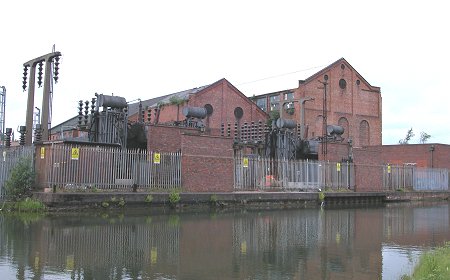
The power station as seen from the canal.
|
The venture proved to be a success and by
1908 the capacity had been increased to around 6MW. The
following description from the 1908 Red Book includes a detailed
account of the equipment installed at the power station at the
time:
The buildings at present consist of a main
generating station and three sub-stations. The system of supply
is continuous current distributed on the 3-wire system at a
pressure of 440 volts between the outer mains and a standard
pressure of 220 volts for the supply to consumers' premises. The
outlying portions of the town are supplied by motor transformers, the driving current
of which is applied at a pressure of 2,000 volts from the
generating station, and is transformed down to the standard
pressure of 220 volts.
The plant at the
generating station
consists at present of eight complete generating sets, as
follows :-
One 200 B.H.P. Belliss two-crank high speed compound
condensing engine, direct coupled to a Parker two pole dynamo,
140 kilowatt, 2,000 volts. This generating set is used for
street lighting and for supplying current to the motor
transformers in the outlying parts of the borough.
Two 350 B.H.P. Belliss three-crank compound condensing engines, direct
coupled to Parker's dynamos, each 220 kilowatt, 550 volts.
One
460 B.H.P. Belliss three-crank triple expansion condensing
engine direct coupled to 300 kilowatt 550-volt E.C.C. generator.
Two 800 I.H.P. Willans three-crank compound condensing engines,
direct coupled to 500 kilowatt E.C.C. multipolar generators, 550
volts.
One Davey Paxman 800 I.H.P. three-crank compound
condensing engine, direct coupled to 500 kilowatt E.C.C.
multipolar generator, 550 volts.
One Bellis 800 B.H.P. 3-crank
triple expansion engine, direct coupled to 600 kilowatt 550-volt
Parker generator.
All these
generating sets are also
available either for electric lighting or tramway traction. The
five Belliss engines are arranged to exhaust into surface
condensers supplied by Joseph Evans and Sons, of Wolverhampton;
and the Meirlees Watson Company of Glasgow. The Willans engines
and the Davey Paxman engine each exhaust into a separate Ledward
ejector condenser, which is supplied with circulating water by
a Gwynne centrifugal pump, direct driven by a 20hp. Parker
motor.
The combined lighting and traction
switchboard was supplied by Thomas Parker, Limited, to the
design of the chief engineer.
The Boiler house contains six Lancashire
boilers, 30ft. by 8ft., and two "Economic" boilers, 14ft. 6in.
by 9ft. 9in., two economisers, and the necessary feed Pumps,
etc., and a water softening plant is in use. These boilers work at a pressure of 130lbs. per square
inch and have
a maximum duty of 2,000 gallons per hour.
The brick chimney is 115 feet in height,
and is of circular section throughout inside, and an induced
draught exhaust fan has been installed to improve the draught of
the chimney.
A large Battery Room has been built over
the present boiler house for the purpose of containing two
storage batteries, one of 260 Tudor cells for lighting purposes,
and one of 263 cells for tramway work.
An Auxiliary Station has been opened at the
Refuse Destructor, in Crown street, and the following plant
installed:
Two 125 Kilowatt multipolar shunt wound Parker
generators, coupled direct to two Belliss two-crank compound
enclosed 180 B.H.P. steam engines. The steam for driving these
engines is supplied from the refuse destructor.
A new generating station is now in the
course of construction at Commercial Road, especially designed
for the purpose of power supply for large consumers. The initial
equipment of this new station consists of two steam turbine
generating sets of 1,000 kilowatts capacity each. The turbines
being constructed by Williams and Robinson, of Rugby, and the
generators by the Electric Construction Company, Wolverhampton.
Current will be supplied from these generating sets at a
pressure of 6,000 volts alternating.
The boiler house equipment of the new
station will consist of two large water tube boilers, by Babcock
and Wilcox, of London, each boiler having an evaporative
capacity of 20,000lbs. of water per hour. The waste gases from
the boilers after passing through Green's economiser are
discharged into a Steel Chimney 175 feet in height, supplied and
erected by J. Thompson.
The extensions to the boiler house and
engine room were officially opened on 16th March,
1908 and increased the capacity to 6.4MW. The new buildings were
constructed by local builder H. Gough.
|
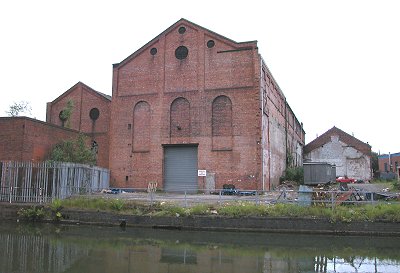
The old generating hall seen from the
canal.
|
Under the Corporation Electric Lighting
Extension Order of 1913, the area covered by the power station
was doubled to 11 square miles by the inclusion of the Parish of
Bushbury.
In 1925 the DC generators were scrapped and
replaced by two 7,500KW turbo alternator sets to increase the
station’s capacity to 23MW. There were then 7 turbine-driven
alternators provided by Siemens Brothers Limited, of Stafford;
the British Thomson-Houston Company Limited, of Rugby; and the
Electric Construction Company, Limited, of Wolverhampton.
The boiler plant consisted of large and
modern Stirling, and Babcock and Wilcox Water-tube boilers, with
economisers and water softeners. The power station then fed an
area of 47 square miles, including Brewood and Codsall. The
Borough's own Acts of Parliament in 1928 and 1932 extended the
area to 106 square miles to include Saredon, Brineton, Blymhill and Penkridge
to the north, Pattingham to the West, and Albrighton
and Tong to the north west. |
|
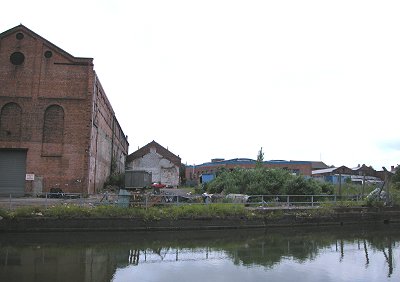
The derelict site as it is
today. |
In 1925 the power station came under the
control of the West Midlands Joint Electricity authority that
took over the existing electricity supply companies and
generating stations in Staffordshire, Shropshire and
Worcestershire. In 1933 the three phase AC distribution system
was introduced, and in 1936 a new generating hall was added. At
the time about 80% of the supply was taken by industry. |
|
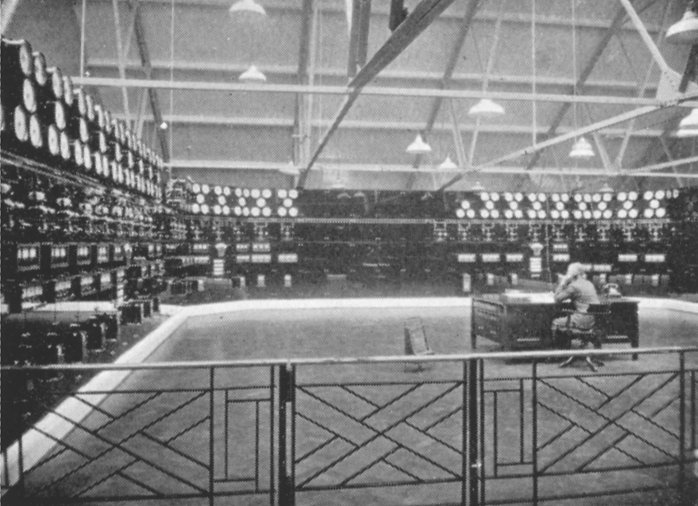
The power station
switchboard room in the early 1930s. |
|
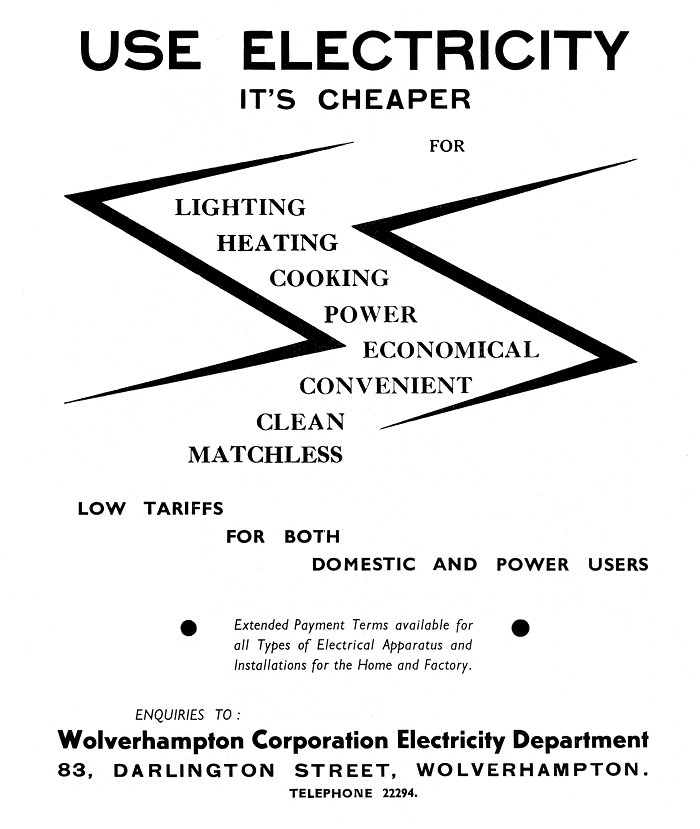
An advert from the
early 1930s. 83 Darlington Street was the
location of the department's showroom. |
|
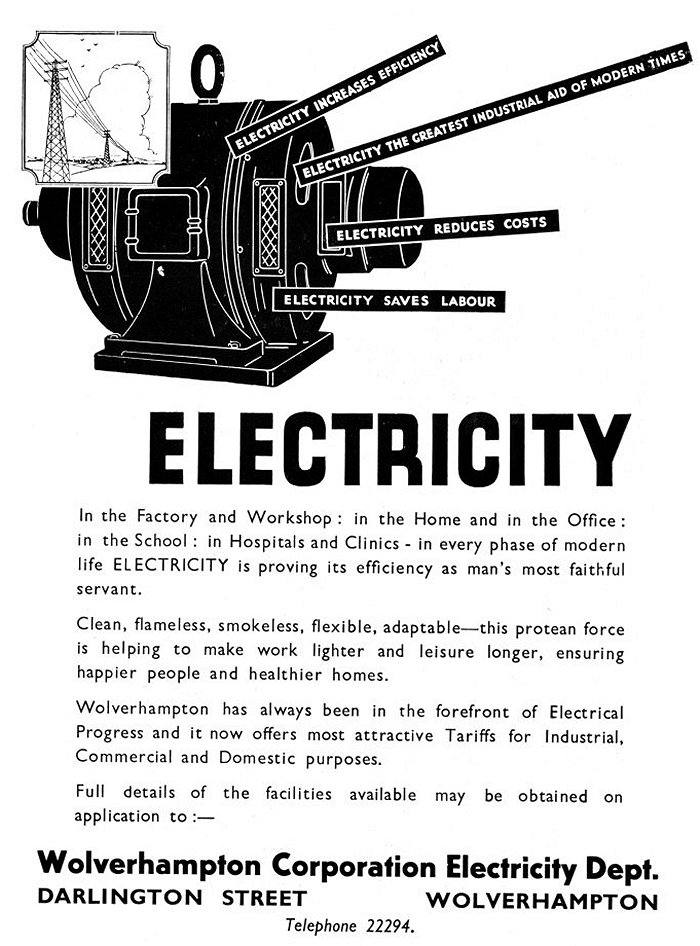
Another advert
from the early 1930s. |
| In 1948 the industry was nationalised, and
local supplies were proved by the Midlands Electricity Board (MEB)
as from 1st April. The power station continued
much as before, but by the 1970s at 80 years of
age it was getting a little old fashioned and
un-economical when compared with the large
efficient power stations of the day. |
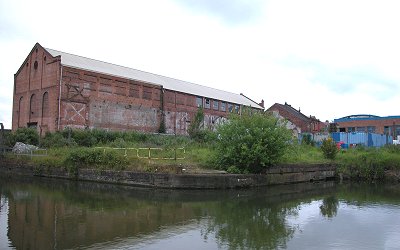
A final view of the
surviving generating hall. |
| As a result it closed in
the late 1970s, and a local landmark, the cooling tower, was
demolished. The power station was the only single-tower power
station in the midlands. The power station’s fleet of twenty
canal boats were in use until the middle 1950s, after which the
coal came-in by road. |
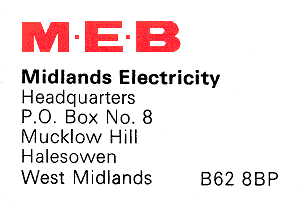
 |
Return to the Canals
and Industry Menu |
|